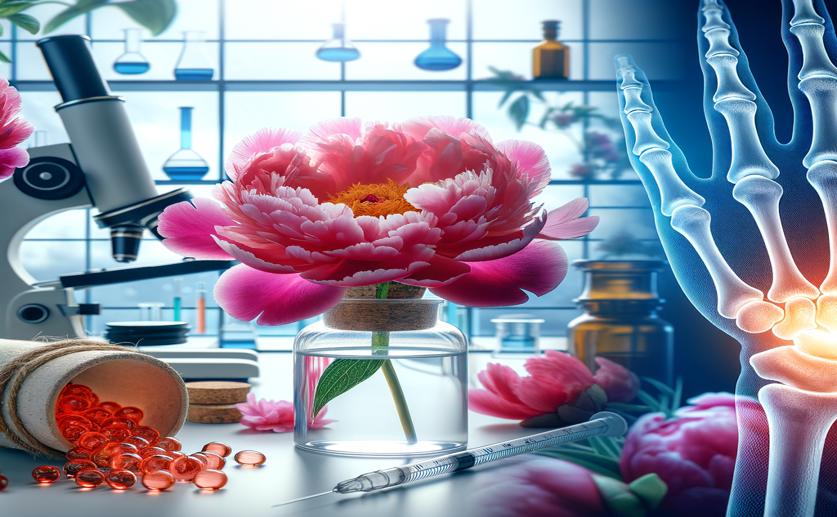
Paeoniflorin Reduces Inflammation in Arthritis by Targeting RNA
Greg Howard
12th May, 2024

Image Source: Natural Science News, 2024
Key Findings
- A study from Jiangxi University found a molecule, hsa_circ_009012, that promotes inflammation in rheumatoid arthritis
- Paeoniflorin, a traditional Chinese medicine, was shown to reduce this inflammation by affecting hsa_circ_009012 and related pathways
- The findings suggest paeoniflorin could be a new treatment option for managing rheumatoid arthritis
References
Main Study
1) Paeoniflorin inhibits the inflammation of rheumatoid arthritis fibroblast-like synoviocytes by downregulating hsa_circ_009012.
Published 15th May, 2024 (future Journal edition)
https://doi.org/10.1016/j.heliyon.2024.e30555
Related Studies
2) Global, regional and national burden of rheumatoid arthritis 1990-2017: a systematic analysis of the Global Burden of Disease study 2017.
3) Rheumatoid arthritis.
4) 2017 American College of Rheumatology/American Association of Hip and Knee Surgeons Guideline for the Perioperative Management of Antirheumatic Medication in Patients With Rheumatic Diseases Undergoing Elective Total Hip or Total Knee Arthroplasty.



 4th April, 2024 | Jenn Hoskins
4th April, 2024 | Jenn Hoskins